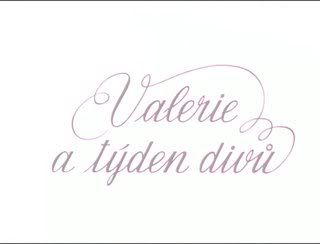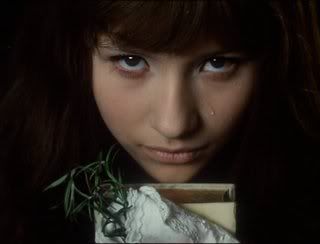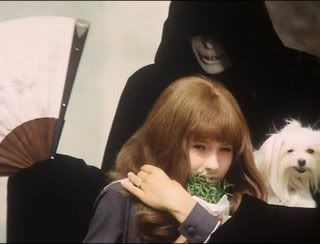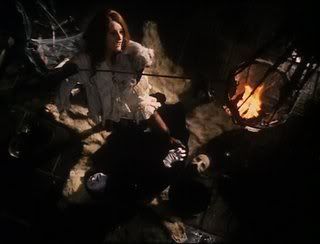
Jaromil Jires’ Valerie and Her Week of Wonders is the type of film that most movie viewers think of when they hear the term “art house”: its foreign (and on top of that, its Czech, so it’s not even a “familiar” type of foreign); it is more concerned with the visual aspect of film than with storytelling; and it’s almost entirely inscrutable. People parodying foreign art house films might actually come up with something that is at least superficially similar to Valerie.
Do not take this description, though, to be a condemnation of the film. Indeed, the movie is far too beautiful to condemn, and too strange to dismiss. But you need to know what you’re getting yourself into.

The plot (as much as it can be discerned) is as follows: Valerie (Jaroslava Schallerova), thirteen years old and beautiful, has just begun to menstruate. Her brother (but is he her brother? It’s never clear) breaks into the home that she shares with her grandmother and steals her earrings while she is sleeping, only to return them, explaining to her that they are magical. That same day, the carnival arrives. Among the tumblers is a man who looks a lot like Count Orlok, who Valerie sees as a monster. Her grandmother seems to recognize the man. Throughout the rest of the film, this vampiric figure is identified as a constable, a priest, and (most importantly) Valerie’s father, but it’s never clear if he’s any of them.

And then things get weird. The stranger turns Valerie’s grandmother, willingly, into a vampire; a bunch of self-flagellating thugs chase off Valerie’s brother, at least for a while; the local priest tries to rape Valerie; etc., etc. The difficulty in following the film isn’t exactly in understanding what’s going on--there’s usually an explanation for everything, at least at some level--and you can follow the plot without causing yourself too many problems. The difficulty, such as there is, is one of interpretation. How, exactly, are you, the viewer, to interpret the events? Should they be understood as allegory (but allegory of what)? Should they be understood in some sort of psychoanalytic-symbolic sense? Is everything happening literal, and real--in the sense that the action of a horror movie, with monsters and all, is real? What are we to make of all of it?
Perhaps most worth noting, beyond its general strangeness, is the degree to which the film is saturated with sexuality. Little Valerie, having “become a woman,” finds herself desired by everyone--family especially. Her ‘brother’ is clearly sexually interested in her, as is the priest, the vampire, and her own grandmother. Not only does she become the object of desire, but she also becomes a desiring object, seemingly interested in everyone’s advances. Considering that Valerie, and the actress portraying her, is thirteen, you can add pedophilia to incest, when counting up the ways in which the film can make your skin crawl.

I’ve said that the film’s inscrutable. So, what’s to be made of all of this? I certainly can’t claim to be familiar with the source material (a novel by Vitezslav Nezval), nor am I comfortable discussing the history or culture of Czechoslovakia in 1970. However, my basic stab at interpreting the film goes like this: Valerie, having entered womanhood, is thrust into the world of sexuality. That sex can be mysterious and horrifying, when first encountered (or when only imagined), accounts (to some extent) for both the unexplainable and the more horrifying aspects of the film. The more incestuous elements arise, I believe, from a similar confusion--as a child, a kiss from her grandmother, holding hands with a boy, etc., was only exactly what it was. Sex complicates all of that. There is sensuality everywhere, and everything that was once neutered is now, potentially, sexual. It’s a whole new world, and the film attempts to visualize that.
And it is in the visual realm that Valerie and Her Week of Wonders is most powerfully felt. Many of the film’s stills could be framed and put up on a wall, to be admired. I can scarcely think of two other films where so much time and effort has so clearly been put into making everything beautiful. Each shot is framed with the utmost care, each scene carefully composed. It’s truly wondrous to watch; that is, if you can sit through it.










5 comments:
this sounds amazing
Jesus, Ash. Where do you find all of this awesome stuff to watch?
Through purely legitimate sources, I assure you!
A lot of the discussion at criterionforum.org/forum leads me to some of the more esoteric stuff. Also, trying to locate cool samurai movies is one of my hobbies.
Nice movie and learnable
I really loved to visit your blog. Hope to see more inputs from you in your blog.
Post a Comment